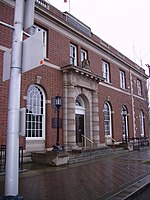Agnew, Washington
Clallam County, Washington geography stubsUnincorporated communities in Clallam County, WashingtonUnincorporated communities in Washington (state)Use mdy dates from July 2023
Agnew is an unincorporated community in Clallam County, Washington, United States. It lies on a backroad leading to Port Angeles and just outside Sequim. Agnew is a primarily rural residential area located along the Strait of Juan de Fuca. Agnew was first settled around 1875 by Charles Agnew. Previously called "De Fuca" and "Wildcat Valley", it received its present name in 1920. It is a consolidation of the former towns of Reeveton and Lindsay.
Excerpt from the Wikipedia article Agnew, Washington (License: CC BY-SA 3.0, Authors).Agnew, Washington
East 9th Street,
Geographical coordinates (GPS) Address Nearby Places Show on map
Geographical coordinates (GPS)
| Latitude | Longitude |
|---|---|
| N 48.106111111111 ° | E -123.425 ° |
Address
East 9th Street 901
98362
Washington, United States
Open on Google Maps









